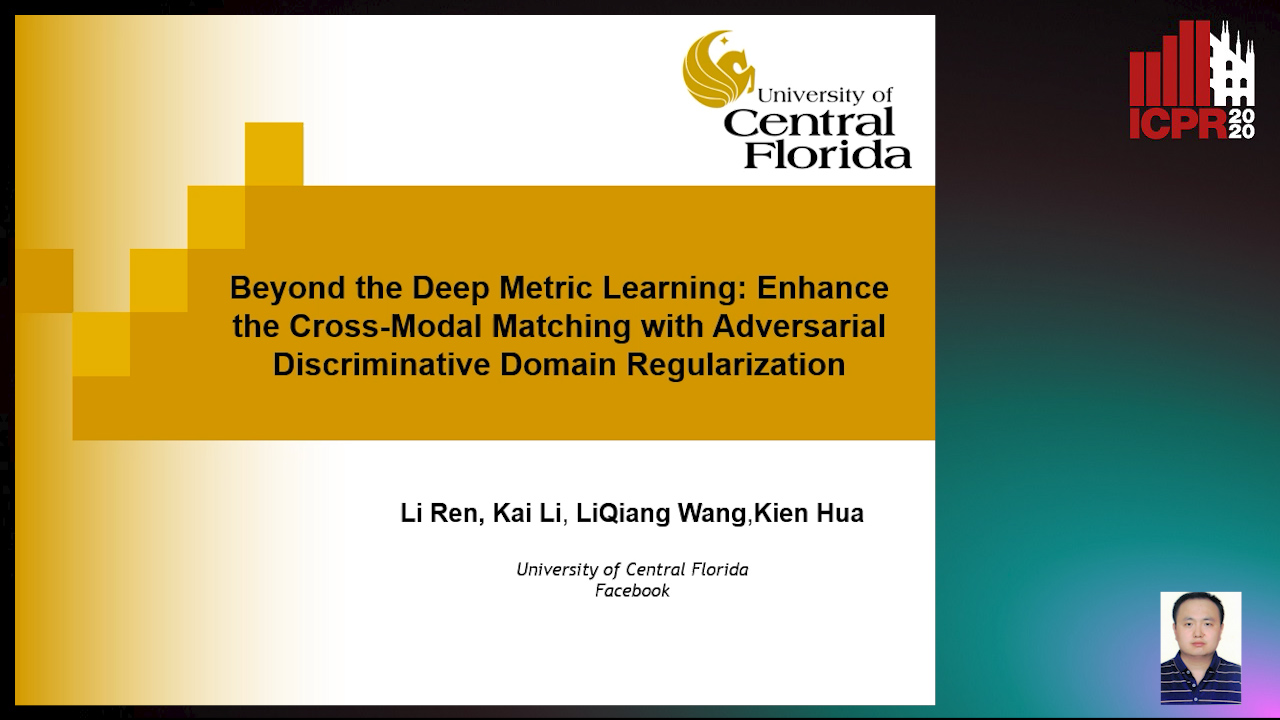Kien Hua
Papers from this author
Beyond the Deep Metric Learning: Enhance the Cross-Modal Matching with Adversarial Discriminative Domain Regularization
Li Ren, Kai Li, Liqiang Wang, Kien Hua

Auto-TLDR; Adversarial Discriminative Domain Regularization for Efficient Cross-Modal Matching
Abstract Slides Poster Similar
Deep Composer: A Hash-Based Duplicative Neural Network for Generating Multi-Instrument Songs
Jacob Galajda, Brandon Royal, Kien Hua

Auto-TLDR; Deep Composer for Intelligence Duplication